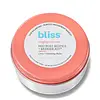What's inside
What's inside
 Key Ingredients
Key Ingredients

 Benefits
Benefits

 Concerns
Concerns

 Ingredients Side-by-side
Ingredients Side-by-side

Cetyl Ethylhexanoate
EmollientEuphorbia Cerifera Wax
Ricinus Communis Seed Oil
MaskingSorbeth-30 Tetraoleate
EmulsifyingPolybutene
Cetearyl Alcohol
EmollientSilica
AbrasivePanthenol
Skin ConditioningTocopherol
AntioxidantMagnesium Carboxymethyl Beta-Glucan
Skin ConditioningLactococcus Ferment Lysate
Skin ConditioningSqualane
EmollientCeramide NP
Skin ConditioningCeramide AP
Skin ConditioningCeramide EOP
Skin ConditioningBeta-Carotene
Skin ConditioningBeta Vulgaris Root Extract
Skin ConditioningDaucus Carota Sativa Root Extract
Skin ConditioningGlycine Soja Oil
EmollientZinc PCA
HumectantLactic Acid
BufferingAllantoin
Skin ConditioningXanthan Gum
EmulsifyingFructooligosaccharides
HumectantPhytosphingosine
Skin ConditioningPotassium Lactate
BufferingCholesterol
EmollientPentaerythrityl Tetra-Di-T-Butyl Hydroxyhydrocinnamate
AntioxidantCarbomer
Emulsion StabilisingSodium Lauroyl Lactylate
EmulsifyingWater
Skin ConditioningPhenoxyethanol
PreservativeEthylhexylglycerin
Skin ConditioningSodium Benzoate
MaskingSodium Chloride
MaskingCetyl Ethylhexanoate, Euphorbia Cerifera Wax, Ricinus Communis Seed Oil, Sorbeth-30 Tetraoleate, Polybutene, Cetearyl Alcohol, Silica, Panthenol, Tocopherol, Magnesium Carboxymethyl Beta-Glucan, Lactococcus Ferment Lysate, Squalane, Ceramide NP, Ceramide AP, Ceramide EOP, Beta-Carotene, Beta Vulgaris Root Extract, Daucus Carota Sativa Root Extract, Glycine Soja Oil, Zinc PCA, Lactic Acid, Allantoin, Xanthan Gum, Fructooligosaccharides, Phytosphingosine, Potassium Lactate, Cholesterol, Pentaerythrityl Tetra-Di-T-Butyl Hydroxyhydrocinnamate, Carbomer, Sodium Lauroyl Lactylate, Water, Phenoxyethanol, Ethylhexylglycerin, Sodium Benzoate, Sodium Chloride
 Reviews
Reviews

Ingredients Explained
These ingredients are found in both products.
Ingredients higher up in an ingredient list are typically present in a larger amount.
Water. It's the most common cosmetic ingredient of all. You'll usually see it at the top of ingredient lists, meaning that it makes up the largest part of the product.
So why is it so popular? Water most often acts as a solvent - this means that it helps dissolve other ingredients into the formulation.
You'll also recognize water as that liquid we all need to stay alive. If you see this, drink a glass of water. Stay hydrated!
Learn more about Water